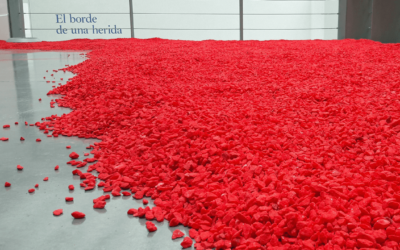ORWELL MONEGROS PROJECT
ORWELL MONEGROS PROJECT
A PROJECT BY BURNINGMAX
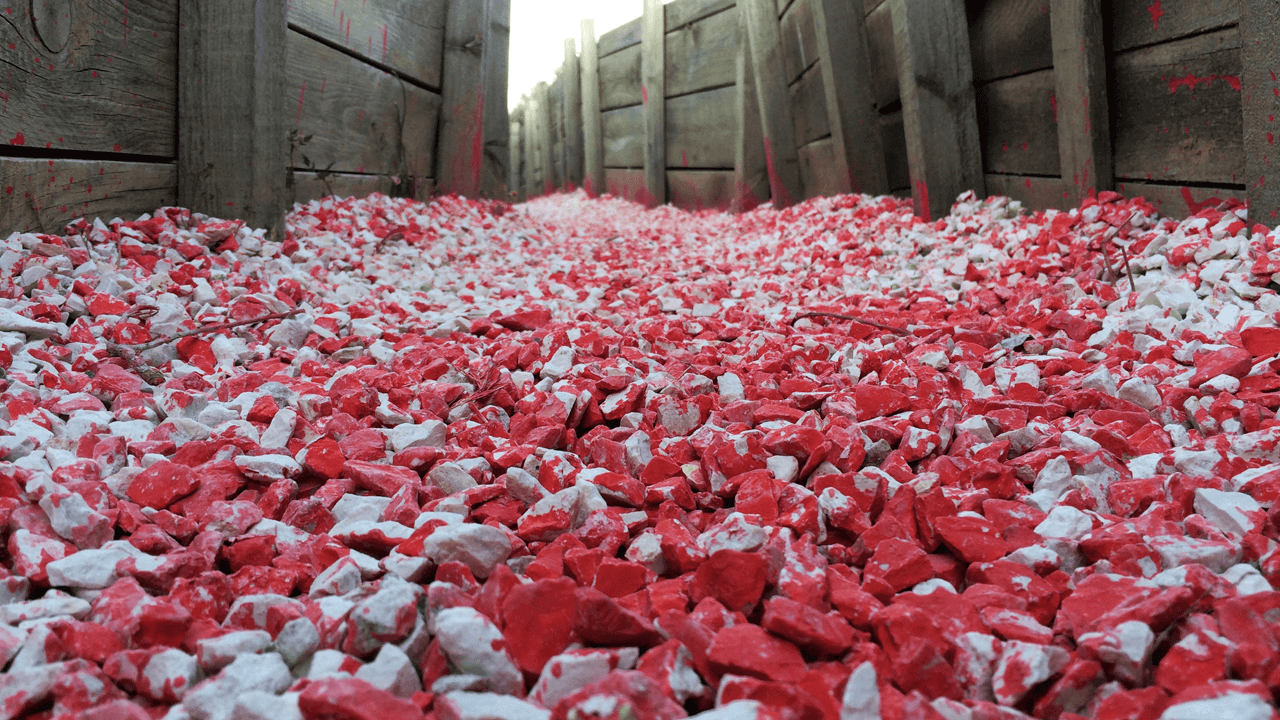
Backstage Stories from the Land Art Installation Work in the Orwell Trenches
As I have already said in the main page of this site dedicate to the art project, the original intention for the installation work was to make it interactive at a multimedia level, with proximity sensors triggering sounds in some key points of the trenches, and other sensors triggering video projections inside the trenches’ bunkers. That project has to be abandoned to to the high risk of vandalism and theft of the technology, basically left unguarded in a very solitary mountain place – but I got over that already many last year.
Once the project focused on its final “silent” version, I started working and planning that way, but I bumped in a few obstacles along the way. As I came out with during the presentation for the opening of the art installation at the CDAN Museum in Huesca, I have a felt a bit “Lost in Los Monegros” – as a metaphor that recalls “Lost in La Mancha“, the multi-awarded movie that documents the failure of Terry Gillian’s production of “Quixote” in Spain, a few years ago. If you haven’t seen it, you should – that documentary is brilliant.
The first bump of the project, was the mistake made by the supplier of the gravel. We ordered 10 tons of red gravel, but they couldn’t produce it in time, and only got 2 tons of the “good red one” (used for the CDAN installation), while the other 8 tons of gravel we received was a plain cheap blank stone – the simple one used for garden pathways and such. The really stressful news arrived barely three weeks before the opening, when there was simply no more time to re-order the gravel, so I stuck with the white one.
At first I thought that the project would have been compromised – the original idea was to have a full red gravel pathway all across the trenches, and I couldn’t just “switch to white”. Conceptually, the red was a reference to the blood – obviously. At I point I though “sure, white is still a funerary color in many Eastern cultures…” – but this work wasn’t about Eastern cultures at all, and I really needed to work with the red color, also for creating a very vivid, shocking visual experience.
Anyway, I had to work with what I had, meaning the white gravel. Which turned out to be very helpful in “preparing” the trenches for the installation. The trenches of the Ruta Orwell have been always not accessible, specially in winter / spring seasons, due to the rain of the Sierra of Alcubierre, which creates wide muddy areas and even some swampy areas filled with water, that can reach depths of more than 20 centimeters. I have written a blog article in Spanish about the fact that, before “recovering the historic memory” through the Homenaje a Los Monegros installation, I had to “physically recover the trenches themselves”. Trash cleanup on a side, the major work has been to create a solid strata of gravel that covered and absorbed all the muddy and swampy areas – the white gravel worked fine for it, also creating a draining surface that will keep the entire pathway accessible, dry and mud-free, even during heavy rains. You can check the article in Spanish here. and also see the images below to figure out how I found the trenches, and how the white gravel worked in fixing the problem.
Good job with the recovering work and the white gravel, but I was there for an art project, not for maintenance work. I needed red painting to get back somehow to the work originally planned – but there was no more budget to cover in red the entire circuit of the trenches in the Ruta Orwell, so I had to come out with some creative way of solving the problem. I spent a few days painting entirely in red the upper layer of gravel, but only for the first 30 meters of the trenches’ pathway. It took forever to go through this process, because… it has been storming rain for two days right when I was layering the painting! More obstacles, and we were just a couple of days away from the opening day. But I refused to get “Lost in La Mancha”, and kept on aiming at the “Quixote”.
When the red painting finally dried, sticking gravel stones together and being all messed up by the rain storms, I had to break it, then pick it up with a shovel and parse it around the rest of the trenches. The final visual effect I created is that of blood stains on the white gravel surface, and I’m very happy with it, even considering the changes to the original installation plans and all the “Lost in Los Monegros” process.
The “infusion” of new red gravel will be alternated to more white gravel (I still have a ton left for this), so to keep creating the “blood stain effect”. Only, this time, the final effect will be more vivid, specially under the sun, and the art installation will last longer before fading away.
The fact that the installation will be fading away in time was planned since the beginning. Like memory fades away with time, also this operation of “historic memory through art” was destined to disappear in time. Well, the massive layer of write gravel will luckily stay, so the future access to the trenches is secured – but it will slowly turn into a classic “Monegros desert color”.
The painting I dripped on the gravel stones will disappear soon while the “newly infused” red gravel from the CDAN installation will probably last 4 to 5 years before fading out. I still hope that some little stones that might have stayed buried and unexposed more than the rest of the gravel, could resist even for 10 years. We’ll see. So you now now that you have plenty of time to visit the Ruta Orwell to catch up with the land art installation – but you are also warned about the fact that visiting the installation within the next few months, you’ll be able to appreciate more the artwork.
As Walter De Maria, an american land art master from the 70s who recently passed away once said, “the essence of land art is the isolation”. True, at many levels – for the land art piece itself, that is more glorious when it merges with the environment in an isolated place; for the visitors, who can experience better the interactions and tensions between the artwork and the environment, and who become part of the installation themselves by simply walking on it, and triggering the sound experience generated by stepping on the gravel, that sounds like walking on a carpet of stones; and of course for the artist – who can experience the magic of creation while merging with nature, fighting against it, and finally being one with the surrounding environment.
One final anecdote about the installation work in the trenches. On Thursday May 18th, just a couple of days before the opening announced for the morning of Saturday 20th, I was still working on the installation, desperate for not having enough red paint, and also under the rain. Trying to figure out a creative solution not to lose my face on Saturday morning by having nothing to show at the opening, I came out with a crazy idea: in lack of the complete “painted” installation, I would have done a performance, by “irrigating” the trenches with… blood.
I was pretty desperate, but the idea didn’t seem too crazy for me, since I also love the “bloody” work of contemporary (and Fluxus) masters such as Hermann Nitsch, or the performances with rotting flesh from marina Abramovich. So I started a search for animal blood – not too difficult, since The Monegros is a rural area with plenty of animal farms – and I ended up asking the Ayuntamiento of Alcubierre to buy 150 liters of animal blood. Which they did, and had it delivered by Friday morning, and put in a refrigerator waiting for the Saturday “performance” I was about to pull. There was a moment on Thursday night that I got in touch with a friend from many years ago, the asturian contemporary artist Cuco Suarez, who has been doing controversial performances since the 80’s, asking him if he could have come for the opening and be my “performance partner”, engaging with me in a duel with water guns shooting blood. Unfortunately Cuco couldn’t come to The Monegros in such a short notice, so I thought that I would have run the performance by simply water the trenches with blood using a watering can, as if it was a garden of death.
But by working for 15 hours steady on the Friday right before the opening, I managed to “fix” the problems created by the lack of painting, and the disaster created by the rain. On Friday afternoon, seeing that I could have actually complete the work, I tried to call the Ayuntamiento telling them to cancel the order for the animal blood, but it was too late – the blood was already been delivered. I am happy that we I didn’t have to use it – besides of the mess (and the smell, and the rotting), people would have been actually repulsed by it (which is OK, when you want to create a powerful emotional response in contemporary art), and they wouldn’t probably stepped on the gravel path of the trenches (which would have been not OK at all). Also, all my vegan and animalist friends would have killed me for using real blood in my artwork. Funny (and weird) story, but it’s true.
Follow the next two links for detailed info on how to get to the trenches of the Ruta Orwell, and to see a photo and video gallery of the land art installation – of course the one in “beta version”, before the final intervention red gravel installation coming up next month.
LATEST ARTICLES FROM THE PROJECT BLOG
Orwell Monegros Remixed Summer 2019
Summer 2019, a new intervention for the Orwell Monegros Project, the land art installation in the Spanish civil war trenches where George Orwell fought back in 1936. Enjoy the photo gallery.
The Art Installation at the Orwell Trenches is Complete [Photo Gallery + Video Walkthrough]
The land installation project in the civil war trenches of the Ruta Orwell has now been completed. Watch the final photo gallery and the video walkthroughs.
CDAN Huesca: The Wound Stays Open Until the End of Summer 2017
Homenaje a Aragón has been invited to join the latest CDAN exhibition “El borde de una herida”, and will remain featured at the Huesca museum until September 2017.
HOMENAJE A LOS MONEGROS | ORWELL MONEGROS PROJECT
A land art and cultural heritage project by Burningmax
With the institutional, media and communication support from
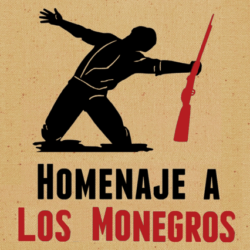
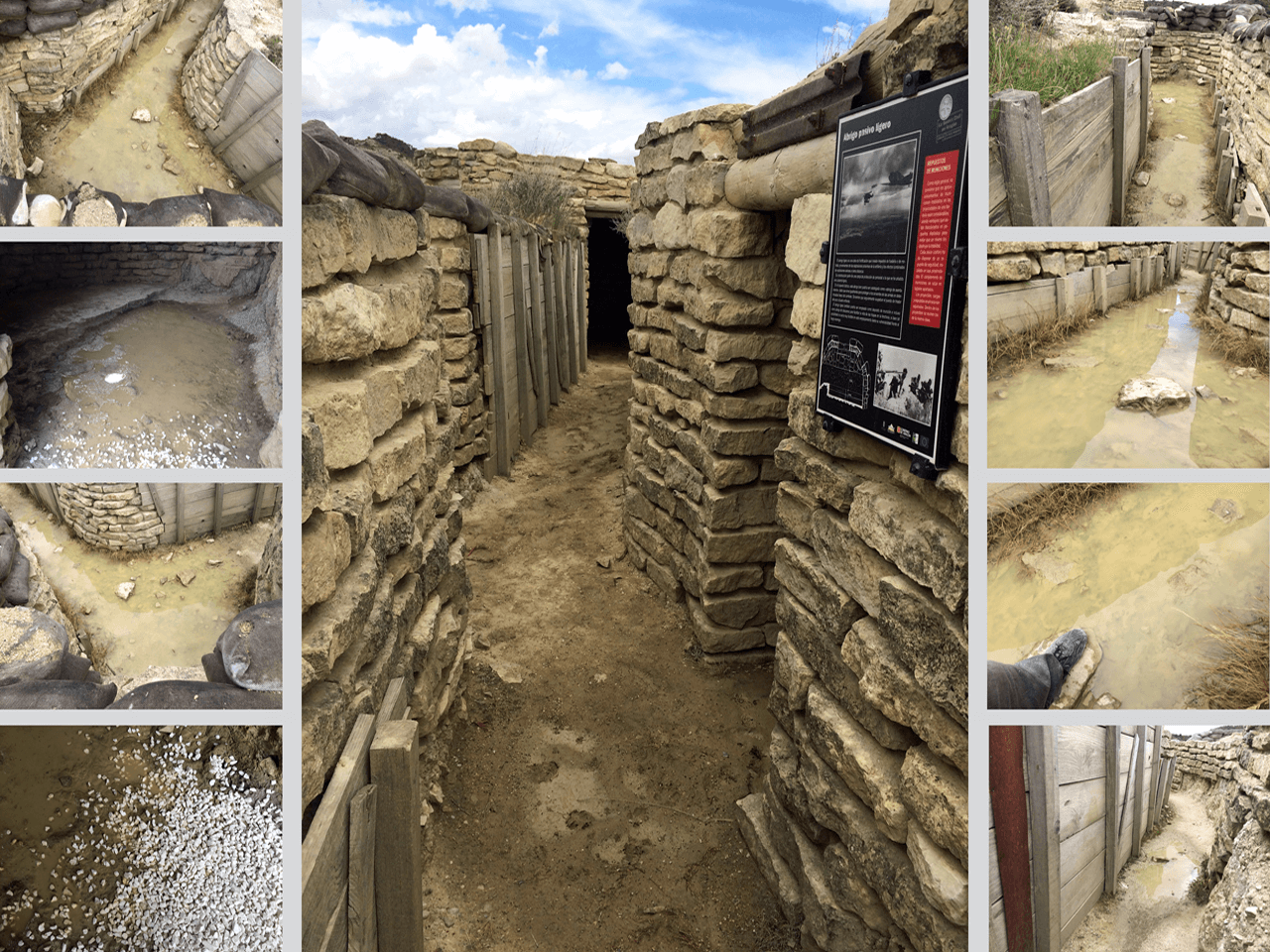
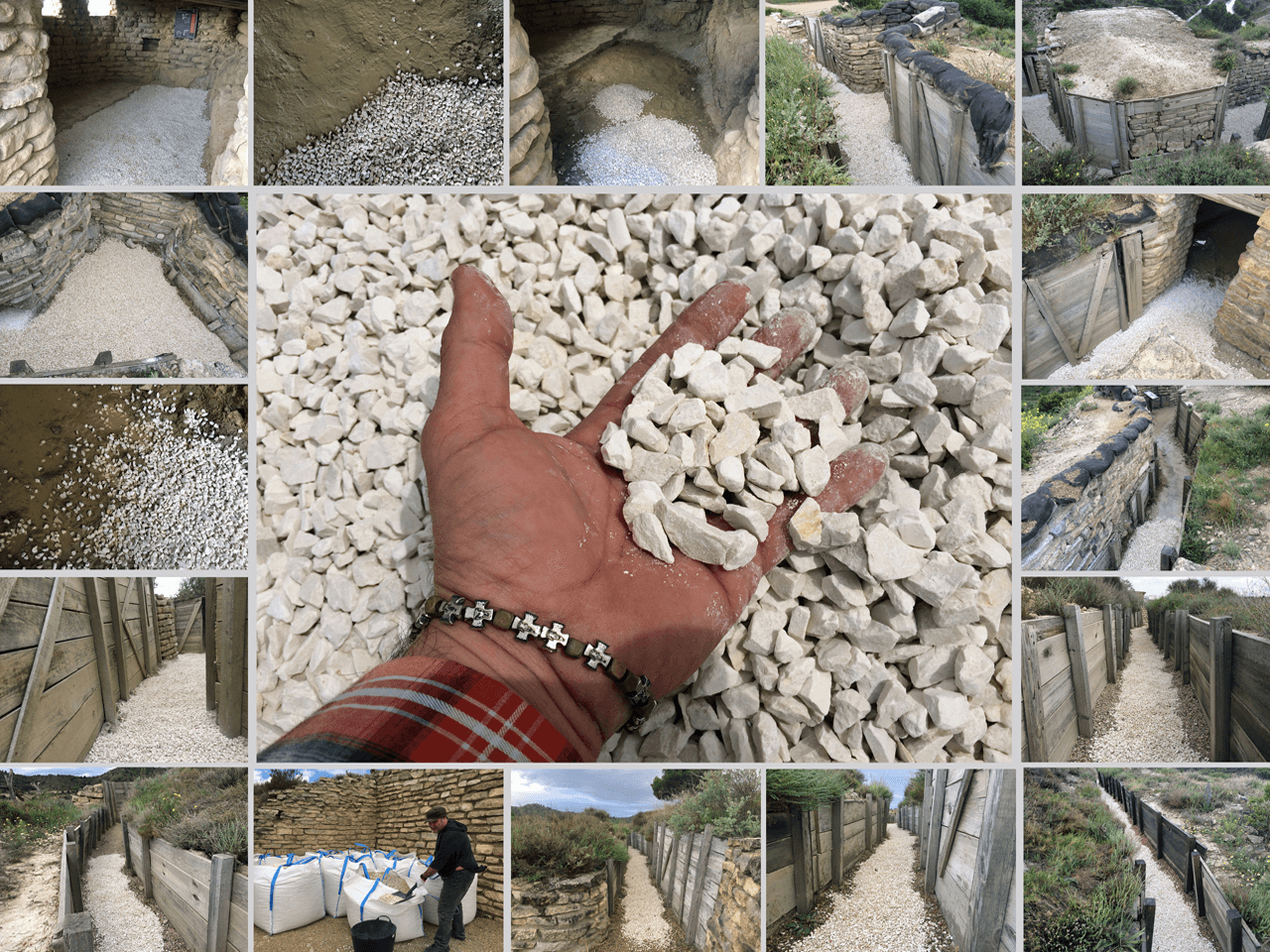
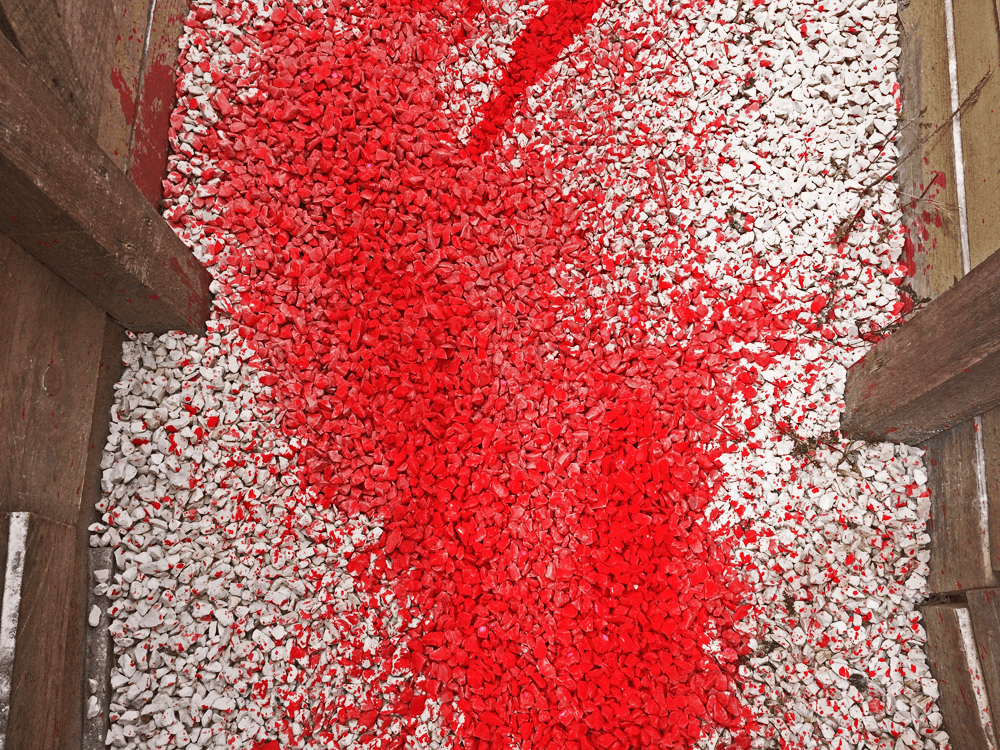
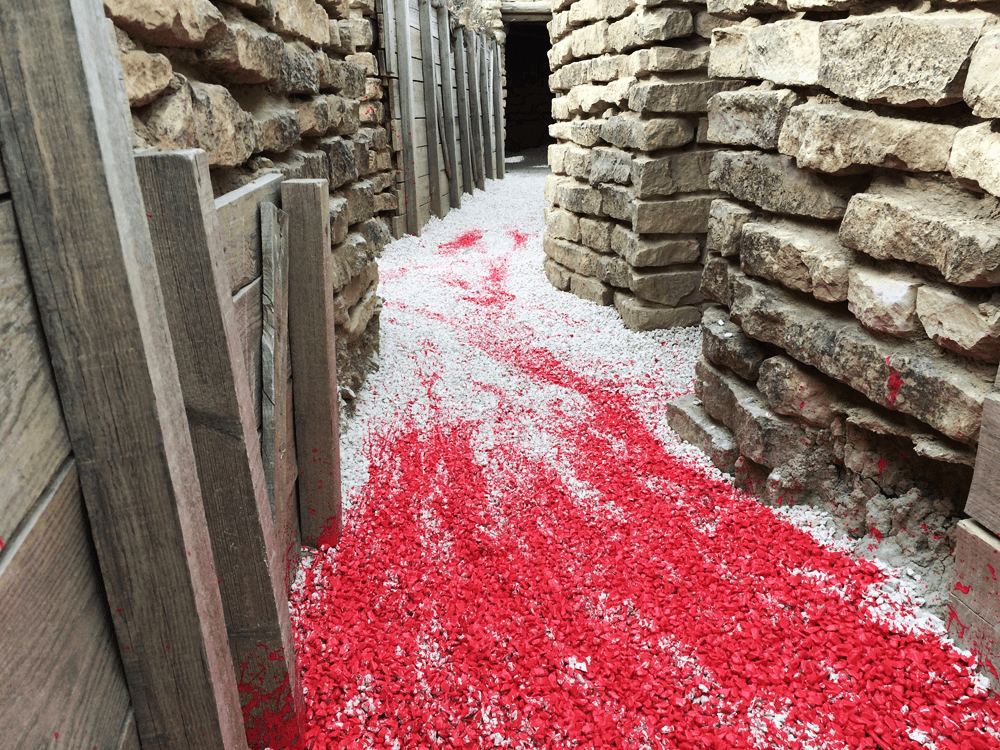
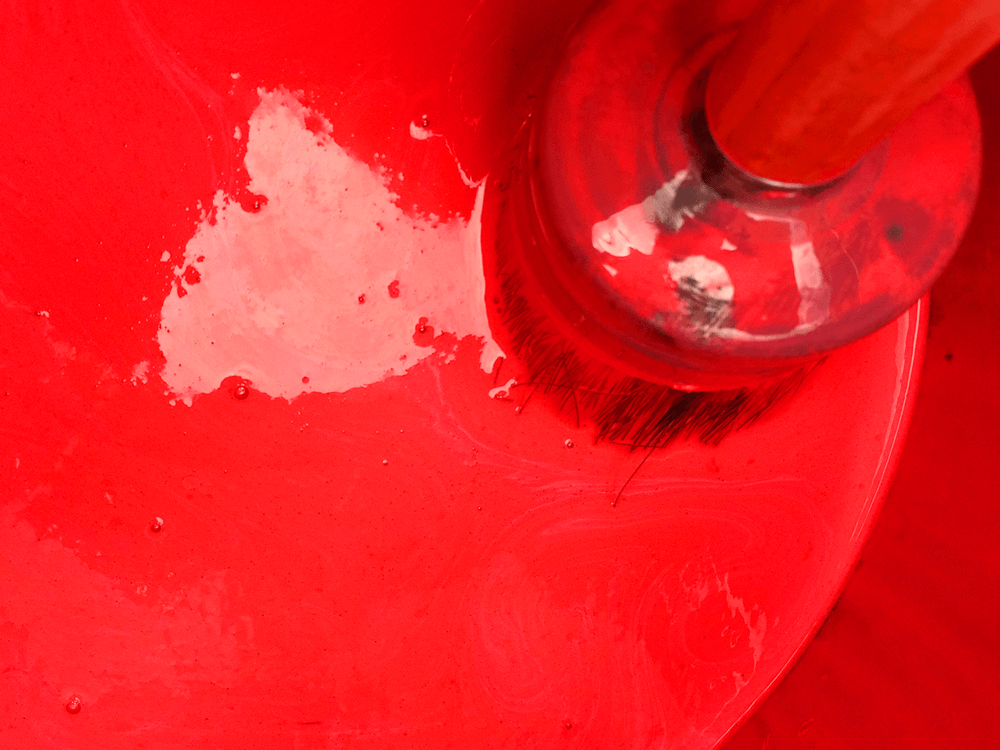
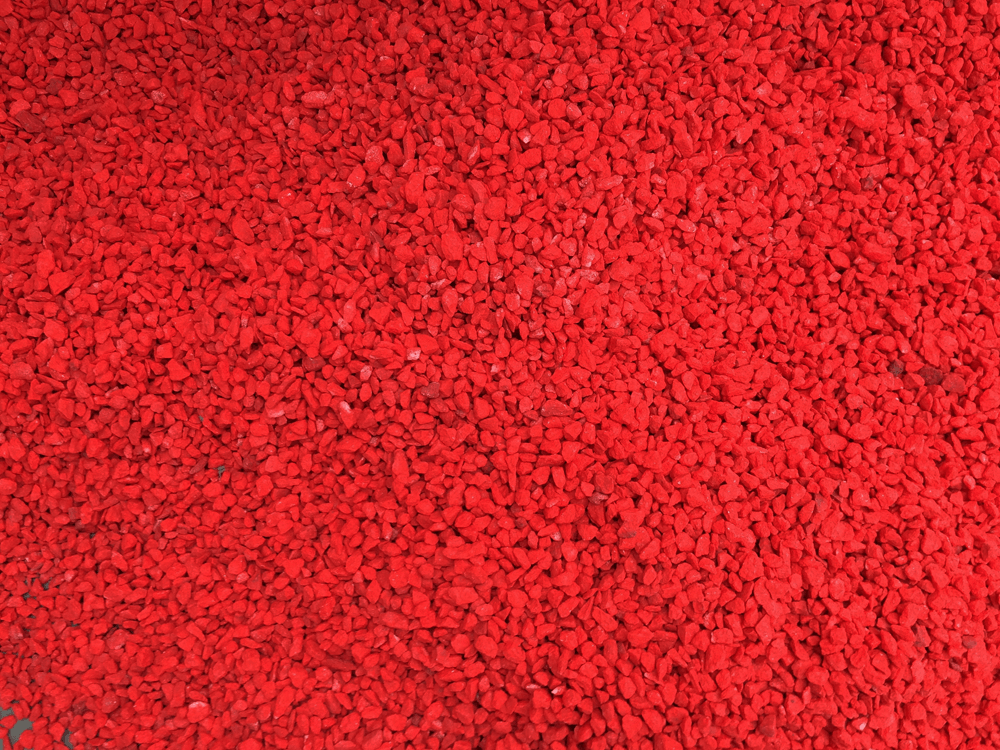
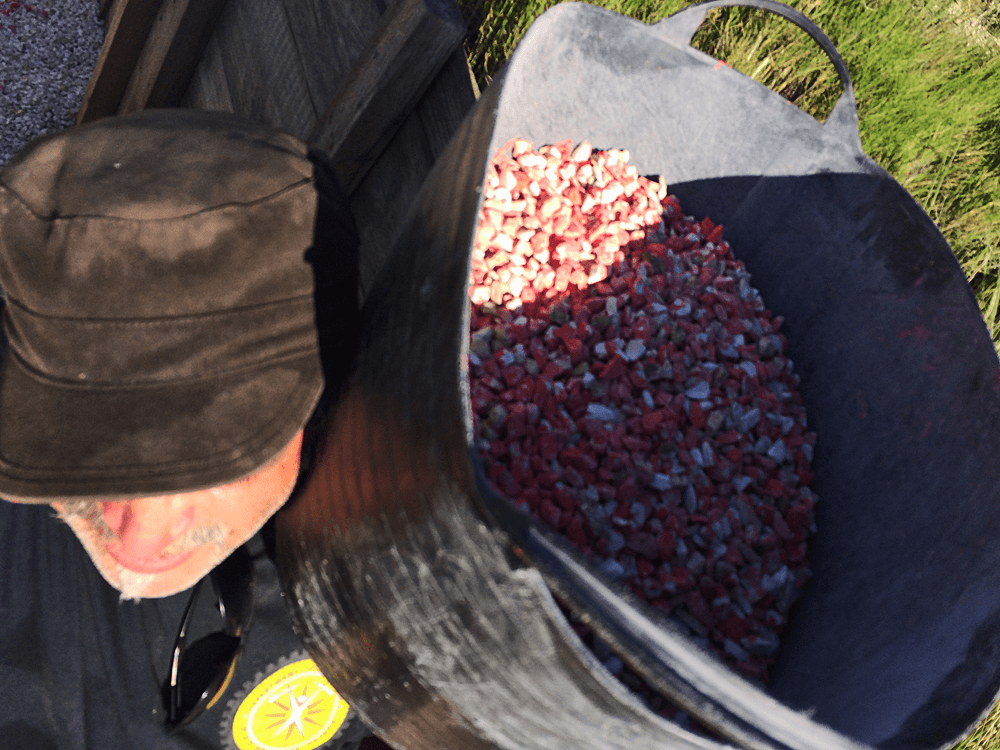
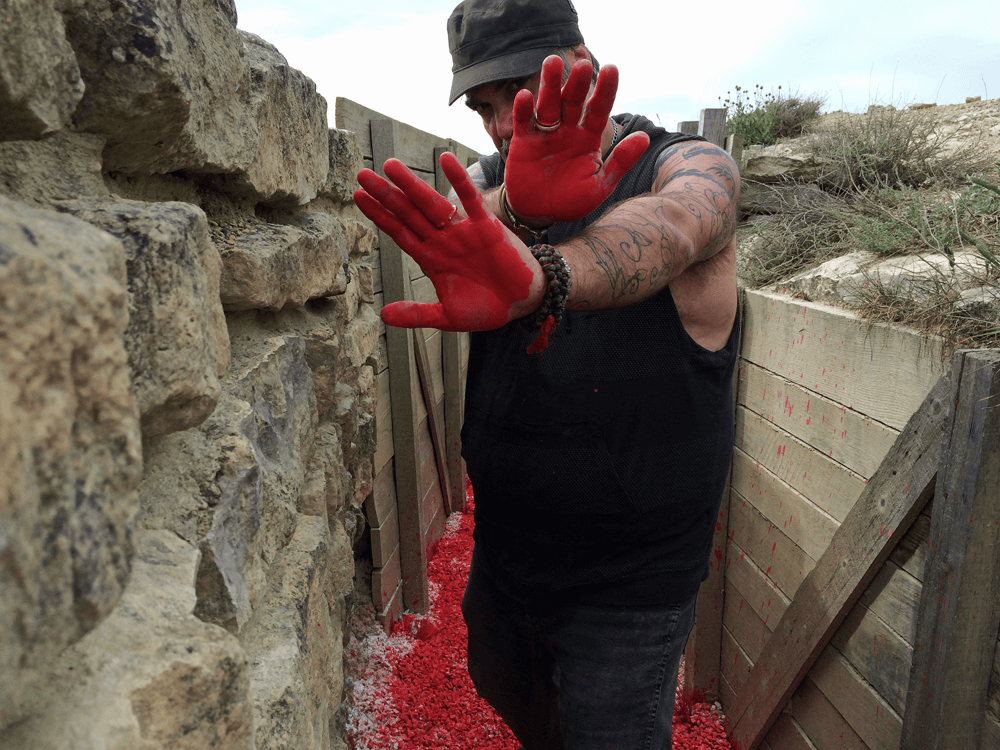
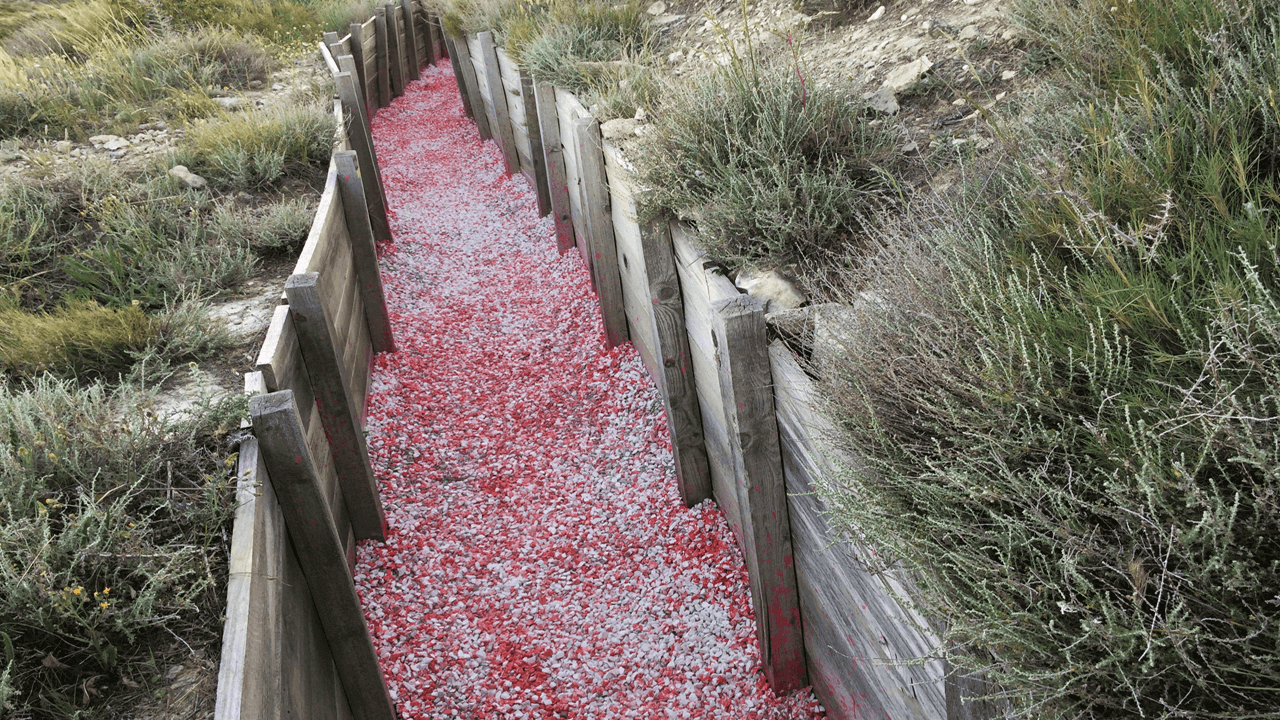
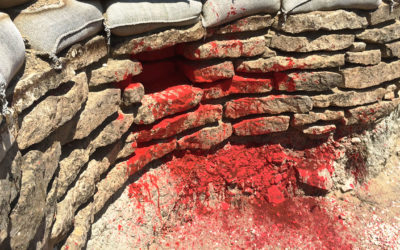
![The Art Installation at the Orwell Trenches is Complete [Photo Gallery + Video Walkthrough]](https://www.burningmax.com/orwellmonegros/wp-content/uploads/2017/11/burningmax-george-orwell-monegros-land-art-installation-spanish-civil-war-trenches-19-400x250.jpg)
